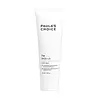What's inside
What's inside
 Key Ingredients
Key Ingredients

 Benefits
Benefits

 Concerns
Concerns

 Ingredients Side-by-side
Ingredients Side-by-side

Water
Skin ConditioningJojoba Esters
EmollientCaprylic/Capric Triglyceride
MaskingGlycerin
HumectantPEG-20 Methyl Glucose Sesquistearate
EmulsifyingMethyl Glucose Sesquistearate
EmollientTocopheryl Acetate
AntioxidantDecyl Glucoside
CleansingPPG-20 Methyl Glucose Ether
Skin ConditioningGlyceryl Stearate
EmollientStearyl Alcohol
EmollientPolyacrylamide
Sapindus Mukorossi Peel Extract
Skin ConditioningChamomilla Recutita Flower Extract
MaskingCamellia Oleifera Leaf Extract
AstringentXanthan Gum
EmulsifyingC13-14 Isoparaffin
EmollientCaprylyl Glycol
EmollientCitric Acid
BufferingDisodium EDTA
Laureth-7
EmulsifyingPhenoxyethanol
PreservativeEthylhexylglycerin
Skin ConditioningWater, Jojoba Esters, Caprylic/Capric Triglyceride, Glycerin, PEG-20 Methyl Glucose Sesquistearate, Methyl Glucose Sesquistearate, Tocopheryl Acetate, Decyl Glucoside, PPG-20 Methyl Glucose Ether, Glyceryl Stearate, Stearyl Alcohol, Polyacrylamide, Sapindus Mukorossi Peel Extract, Chamomilla Recutita Flower Extract, Camellia Oleifera Leaf Extract, Xanthan Gum, C13-14 Isoparaffin, Caprylyl Glycol, Citric Acid, Disodium EDTA, Laureth-7, Phenoxyethanol, Ethylhexylglycerin
Water
Skin ConditioningSolum Diatomeae
AbrasiveSodium Cocoyl Apple Amino Acids
Skin ConditioningGlycerin
HumectantAcrylates/Steareth-20 Methacrylate Copolymer
Acrylates Copolymer
Decyl Glucoside
CleansingDisodium Cocoamphodiacetate
CleansingPhenoxyethanol
PreservativeLauryl Glucoside
CleansingLithium Magnesium Sodium Silicate
AbsorbentPolysorbate 20
EmulsifyingHexylene Glycol
EmulsifyingSodium Hydroxide
BufferingCitrus Aurantium Dulcis Peel Extract
Emulsion StabilisingLimonene
PerfumingDecylene Glycol
Skin ConditioningEthylhexylglycerin
Skin ConditioningPanthenol
Skin ConditioningTetrasodium EDTA
1,2-Hexanediol
Skin ConditioningAscorbyl Glucoside
AntioxidantBorago Officinalis Seed Oil
EmollientTocopherol
AntioxidantHelianthus Annuus Seed Oil
EmollientTocotrienols
Skin ConditioningTriolein
Skin ConditioningTrilinolein
Skin ConditioningMagnesium Nitrate
Methylisothiazolinone
PreservativeMethylchloroisothiazolinone
PreservativeMagnesium Chloride
Water, Solum Diatomeae, Sodium Cocoyl Apple Amino Acids, Glycerin, Acrylates/Steareth-20 Methacrylate Copolymer, Acrylates Copolymer, Decyl Glucoside, Disodium Cocoamphodiacetate, Phenoxyethanol, Lauryl Glucoside, Lithium Magnesium Sodium Silicate, Polysorbate 20, Hexylene Glycol, Sodium Hydroxide, Citrus Aurantium Dulcis Peel Extract, Limonene, Decylene Glycol, Ethylhexylglycerin, Panthenol, Tetrasodium EDTA, 1,2-Hexanediol, Ascorbyl Glucoside, Borago Officinalis Seed Oil, Tocopherol, Helianthus Annuus Seed Oil, Tocotrienols, Triolein, Trilinolein, Magnesium Nitrate, Methylisothiazolinone, Methylchloroisothiazolinone, Magnesium Chloride
 Reviews
Reviews

Ingredients Explained
These ingredients are found in both products.
Ingredients higher up in an ingredient list are typically present in a larger amount.
Decyl Glucoside is a glucose-based surfactant and emulsion stabilizer. It is created by reacting glucose with the fatty acids from plants.
Surfactants help clean the skin by trapping oil, sebum, and dirt to be washed away. As an emulsion stabilizer, it stabilizes the ingredients in a product by preventing them from separating.
This ingredient is biodegradable and non-toxic. This ingredient is commonly found in baby shampoos.
Decyl Glucoside is sometimes used to stabilize the UV filter Tinosorb.
Learn more about Decyl GlucosideEthylhexylglycerin (we can't pronounce this either) is commonly used as a preservative and skin softener. It is derived from glyceryl.
You might see Ethylhexylglycerin often paired with other preservatives such as phenoxyethanol. Ethylhexylglycerin has been found to increase the effectiveness of these other preservatives.
Glycerin is already naturally found in your skin. It helps moisturize and protect your skin.
A study from 2016 found glycerin to be more effective as a humectant than AHAs and hyaluronic acid.
As a humectant, it helps the skin stay hydrated by pulling moisture to your skin. The low molecular weight of glycerin allows it to pull moisture into the deeper layers of your skin.
Hydrated skin improves your skin barrier; Your skin barrier helps protect against irritants and bacteria.
Glycerin has also been found to have antimicrobial and antiviral properties. Due to these properties, glycerin is often used in wound and burn treatments.
In cosmetics, glycerin is usually derived from plants such as soybean or palm. However, it can also be sourced from animals, such as tallow or animal fat.
This ingredient is organic, colorless, odorless, and non-toxic.
Glycerin is the name for this ingredient in American English. British English uses Glycerol/Glycerine.
Learn more about GlycerinPhenoxyethanol is a preservative that has germicide, antimicrobial, and aromatic properties. Studies show that phenoxyethanol can prevent microbial growth. By itself, it has a scent that is similar to that of a rose.
It's often used in formulations along with Caprylyl Glycol to preserve the shelf life of products.
Water. It's the most common cosmetic ingredient of all. You'll usually see it at the top of ingredient lists, meaning that it makes up the largest part of the product.
So why is it so popular? Water most often acts as a solvent - this means that it helps dissolve other ingredients into the formulation.
You'll also recognize water as that liquid we all need to stay alive. If you see this, drink a glass of water. Stay hydrated!
Learn more about Water